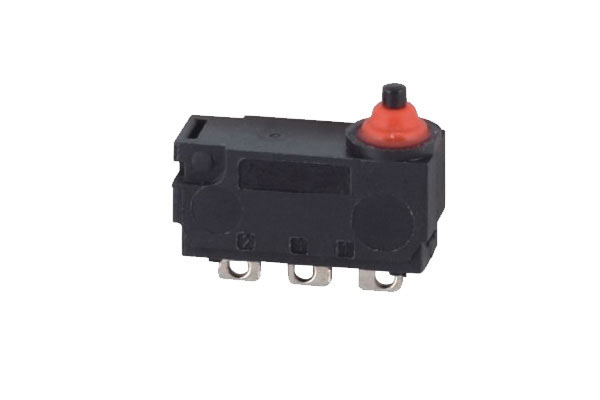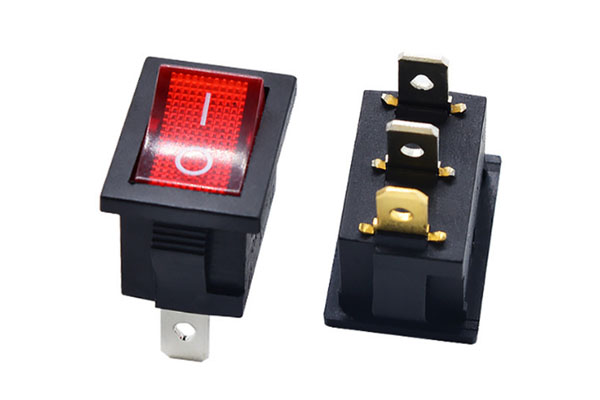Since its appearance in the 1930s, microswitch, a small electromechanical switch, has been continuously developed to meet various application requirements, including aerospace, household appliances, boiler control, medical equipment, sprinkler system, testing equipment, timers and vending machines. Micro switches are usually used to detect temperature, position and liquid level.
Precision microswitch usually has three specifications: basic type, type with operating handle, type with operating handle and housing. The microswitch is designed by pressing and spring.
Whether engineers are looking for temperature controllers used in residential heating or industrial boiler control, or liquid level switches used in large oil tanks, they need to consider the following five key features: overall dimensions, electrical requirements (voltage/current), reliability (mechanical/electrical life), environmental factors (hazardous environment, temperature range), and agency certification. The following five key steps can help you select the microswitch that is suitable for your specific application.
Step 1: Understand how the external dimensions of the switch affect other characteristics
Dimension is important when selecting microswitch. Switch size is directly related to its characteristics, including current range, travel and operating force. For example, the smallest microswitch on the market is 0.50 "x 0.236" x 0.197 "(LxWxH). Although this tiny switch is suitable for detecting circuit status in compact circuit breakers, it can only break 0.1 to 3 amperes (A) of current and has a short travel.
Applications that require more current usually require larger switches. For example, in the oil tank application, the microswitch used to detect the liquid level needs to be able to provide large travel and withstand large current. Generally, in the application of liquid level switch, the switch should directly drive the water pump and carry large current. This requires a large microswitch with a rated current of 20A or 25A at 125VAC or 250VAC.
Tip: The smaller the switch size, the smaller its travel and the current that can be broken.
In addition, the overall dimension of the switch also affects the operating force. Ideally, what engineers need is a switch with low operating force and high current capacity. But in fact, a compromise is needed between these two parameters. To maintain good contact while providing a large current bearing range, the microswitch needs a stronger spring, which will make the operating force and overall dimension of the switch larger. Operating forces range from 2 grams in supercharged pneumatic applications to 8 ounces in solenoid valve applications where greater operating forces are required. The largest switch on the market is 1.94 "x 0.69" x 1.3 "(LxWxH).
Engineers should also note the differential travel of the switch - the distance between the trip position and the reset position of the switch. The threshold will vary according to different applications. For example, in temperature switch applications, the on/off operating points should be as close as possible, and the differential travel should be as low as 0.0001 inch. However, in the application of liquid level pump, too close differential stroke may lead to too frequent startup and shutdown of make-up pump, and shorten the service life of pump.
Photo caption: MICRO SWITCH of Dongguan Dewao Electronics ™ The microswitch has a variety of configurations to choose from, Able to meet the specific needs of engineers.
Step 2: Understand your electrical requirements
The microswitch can usually break the current from 5mA/5VDC to 25A/250VAC. The microswitch product line provides a series of products from low energy consumption type to power load electrical type, suitable for various applications.
Engineers must know the rated current and voltage (AC or DC) required for the specific application in order to select the appropriate switch. Since all kinds of equipment in all industries are committed to low energy consumption, microswitches must be able to work under low current (logic level load) and DC voltage.
However, there are also some applications that require switches capable of breaking high current and high voltage, such as industrial grade pump applications.
In addition to load requirements, engineers must also select appropriate circuits. The switch contact must be one of the normally open (NO) and normally closed (NC) types. For NO type contacts, there is usually no current between the contacts. When the switch acts, the contact closes and the circuit is connected. For NC type contacts, there is usually current between contacts. When the switch acts, the contact opens and the circuit is disconnected.
Step 3: Consider environmental conditions
Environmental requirements have a great impact on the selection of microswitches, especially in highly reliable and critical applications such as industrial control and medical equipment. Understand the environmental conditions of the application, including pollutants in the air that may enter the switch, the liquid where the switch is located, and the operating temperature requirements.
For applications in harsh environmental conditions, you need to select sealed switches with a wide operating temperature range. The highly reliable microswitch can operate in the temperature range of - 65 degrees Fahrenheit (- 54 degrees Celsius) to 350 degrees Fahrenheit (177 degrees Celsius), and can easily handle various applications. At the same time, it should be noted that the protection level of the switch should be at least IP67 to prevent liquid intrusion. This eliminates the need to spend a lot of time designing an enclosure that can achieve the same level of protection.
Step 4: Clarify the working life requirements
The reliability of the switch is critical. You need to know how many times of electrical and mechanical operation life is required for an application? Different switches have different contact materials, housings and terminals, which can meet the electrical and mechanical life requirements in different applications.
A highly reliable microswitch can be operated 10 million to 20 million times before mechanical failure, and 50000 to 100000 times under maximum load before electrical failure.
As for the slight price difference between different quality switches, you need to consider the total cost of use. Because you should not only pay for the switch, but also pay for ensuring the long-term trouble free operation of the switch. In many cases, the additional cost of using a more reliable switch will be offset by its lower warranty cost during use.
Step 5: Inspection Agency Certification Requirements
Selecting switches that meet various international electrical requirements can help you simplify product design for different areas. Some major standard certifications include UL certification in the United States, cUL certification or CSA certification in Canada, ENEC certification in Europe, CQC certification in China, and KC certification in South Korea.
When selecting microswitch, you need to consider many factors, such as overall dimension, load requirements, working environment and reliability. Therefore, you must understand the actual application requirements: what size of switch is required? What is the required rated power? Is it low voltage application? Does the switch need to be sealed? Does the switch need to withstand extreme temperatures? Is certification from international organizations required? Is it a critical application? Once these problems are clear, it is easier to select the switch that is suitable for the application.






